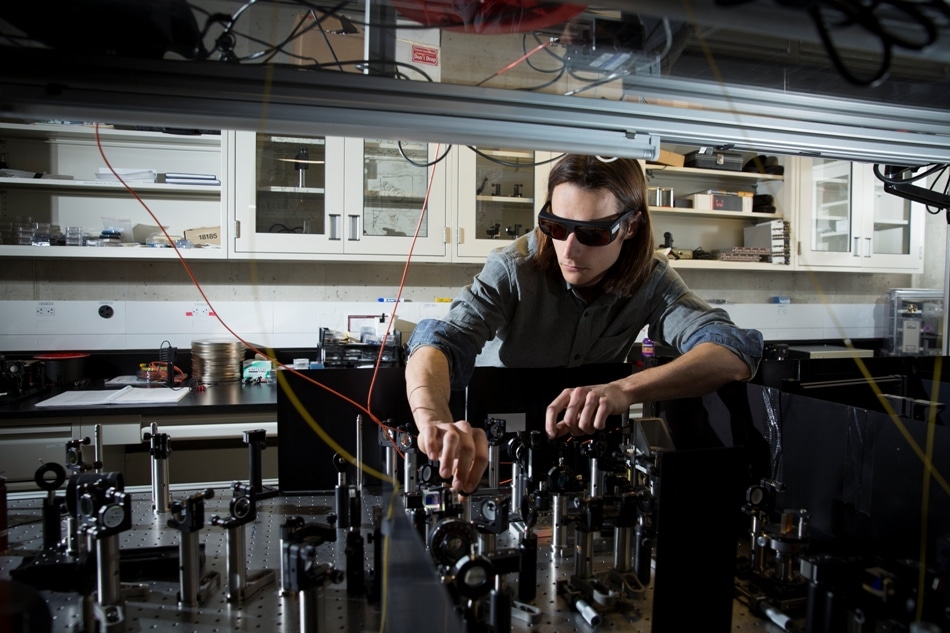Feb 5 2018
Scientists at the Institute for Quantum Computing (IQC) at the University of Waterloo have succeeded in capturing the very first images of ultrafast photons that are energy-time entangled.
 Jean-Phillipe MacLean works in his lab. (Image credit: University of Waterloo)
Jean-Phillipe MacLean works in his lab. (Image credit: University of Waterloo)
The newly developed technique will have direct applications for quantum cryptography and communication protocols, including the likelihood of establishing greatly secure communication channels over long distances.
“This technique will allow us to explore all sorts of quantum effects that were inaccessible because the detectors were simply too slow,” said Jean-Phillipe MacLean, the key author of the study and a Ph.D. candidate in Waterloo's Faculty of Science.
To capture one of the shortest quantum events possible, the researchers employed a technique called optical gating. Similar to the way Harold Edgerton used high-speed strobe lights in order to capture some of the most iconic images of the 20th century, the device makes use of short pulses of light in order to image the photons in time. This technique permitted the researchers to surpass the restrictions in existing detectors and measure entangled pairs of photons with a resolution below one trillionth of a second.
In the last 10 to 20 years, researchers have been interested in exploring and exploiting energy-time entanglement for communication. By being able to measure ultrafast entangled photons, our measurement technique opens the door to exploiting entanglement in a whole new regime.
Jean-Phillipe MacLean, Key Author
Energy-time entanglement is treated to be a feature of quantum light. It happens when a pair of photons are powerfully correlated in both their time of arrival and frequency. Scientists have been interested in developing energy-time entanglement for quantum information but until now, they indeed lacked the resolution in both energy and time to observe it in a direct manner.
The new apparatus is available with a tool frequently relied upon in classical optics research to the quantum world. In classical optics, the potential to accurately measure both the energy and time features of light on ultrafast timescales has been vital for innovations in spectroscopy and laser physics.
“Ultrafast and quantum represent two frontiers of optical science,” said Kevin Resch, interim executive director at IQC and a professor in Waterloo's Faculty of Science. “Bringing techniques from one of these areas over to the other opens up exciting possibilities.”
The study has been featured in Physical Review Letters.
An extremely short event like the one above needs a strobe light in order to freeze the action with an exposure time just a few microseconds long or one millionth of a second. Optical gating, the technique employed by the team of researchers at IQC, behaves like the strobe light in the picture, permitting them to efficiently image the entangled photon pairs with a resolution below one-trillionth of a second.